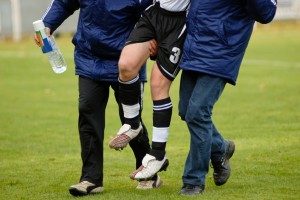Physio jargon……high and low threshold training!
At the Physio Clinic Bristol, we are experts in assessing and treating movement dysfunctions, weather you have come in following a specific injury or you are committing to the TPM Active, Performance Matrix process. We will provide a detailed analysis and retraining of your movement system.
Two terms come up a lot during the rehabilitation process HIGH threshold training and LOW threshold training so I thought it would be helpful for all you guys working on your movement health to have better understanding of the two terms.
Put simply with have two main types of muscle (or motor units as physio’s would say!). Slow low threshold muscles and fast high threshold muscles. During day-to-day function or when participating in sports your body will select and recruit the appropriate muscle unit depending on the task. There are however differences in how these different muscle units are switched on, the speed at which they switch on, the force they use and how quickly they fatigue.
The table below outlines these differences.
| Function | Slow motor units | Fast motor units |
| Contraction speed | Slow | Fast |
| Contraction force | Low | High |
| Recruitment threshold (how easily are they switched on) | Low threshold – easily activated | High threshold – requires higher stimulus |
| Fatigability | Fatigue resistant | Fast fatiguing |
Comerford and Mottram (2012)
Put into context, day-to-day tasks such as walking, postural control, cooking and cleaning predominantly recruit the low threshold units. Activities that require speed, heavy force or high loads e.g. throwing, heavy lifting, running, jumping etc. predominantly recruit high threshold units.
Research demonstrates that pain is more likely to inhibit low threshold motor units, the body will often compensate for this disruption employing recruitment strategies that are normally used for high threshold tasks – this can lead to over working of muscles, strain on the musculoskeletal system and ultimately pain.
If you feel that you are constantly foam rolling tight muscles or that you get pain during day-to-day activities, then book it with one of the team at The Physio Clinic Bristol and get your movement system analysed. We will correctly identify with system is not working efficiently and get you on the road to recovery.
Although the low threshold training might seem slow, non-fatiguing with low force often establishing the correct recruitment of this strategy is vital for successful rehabilitation.

Birgitte Hoff

